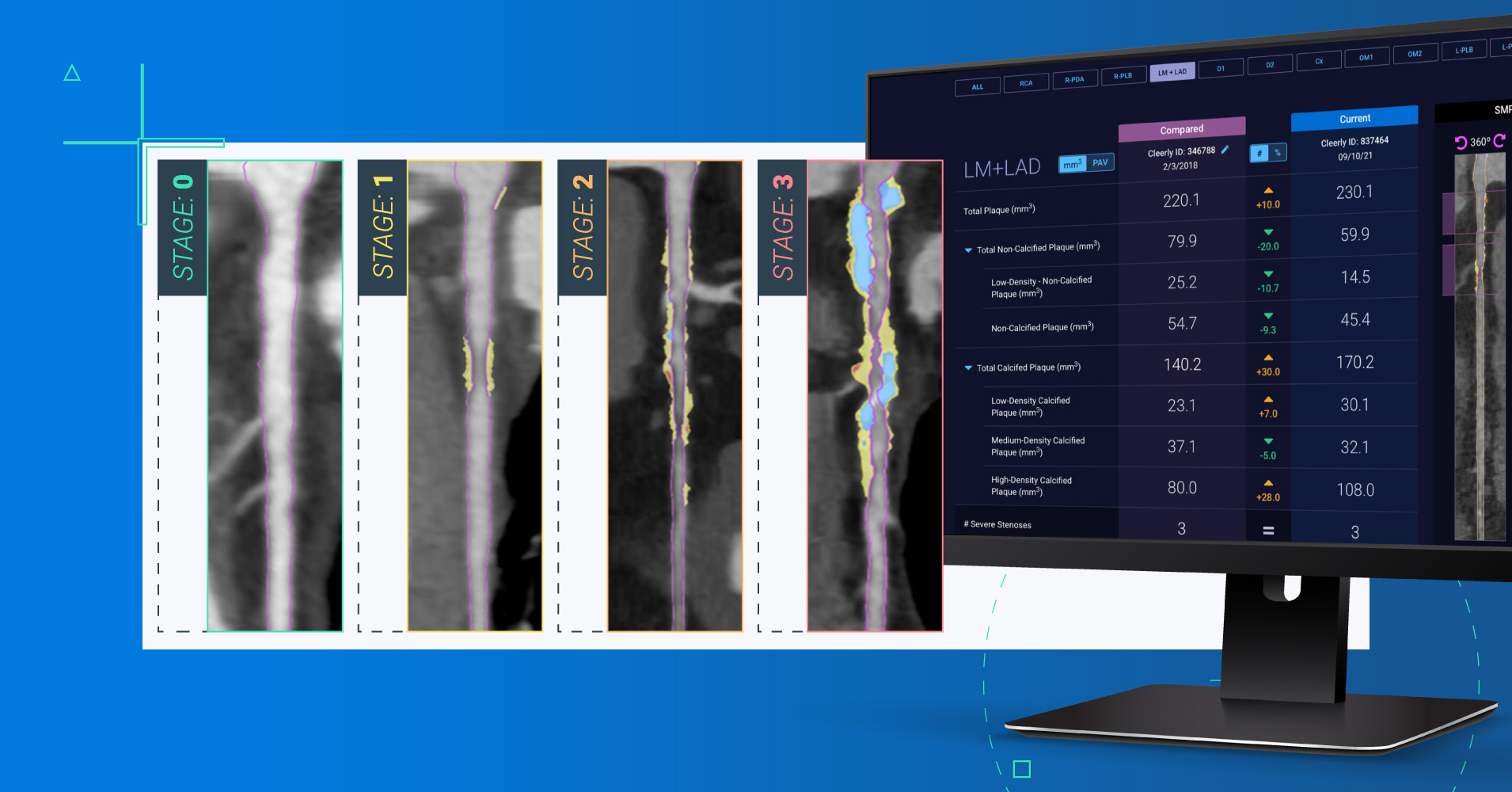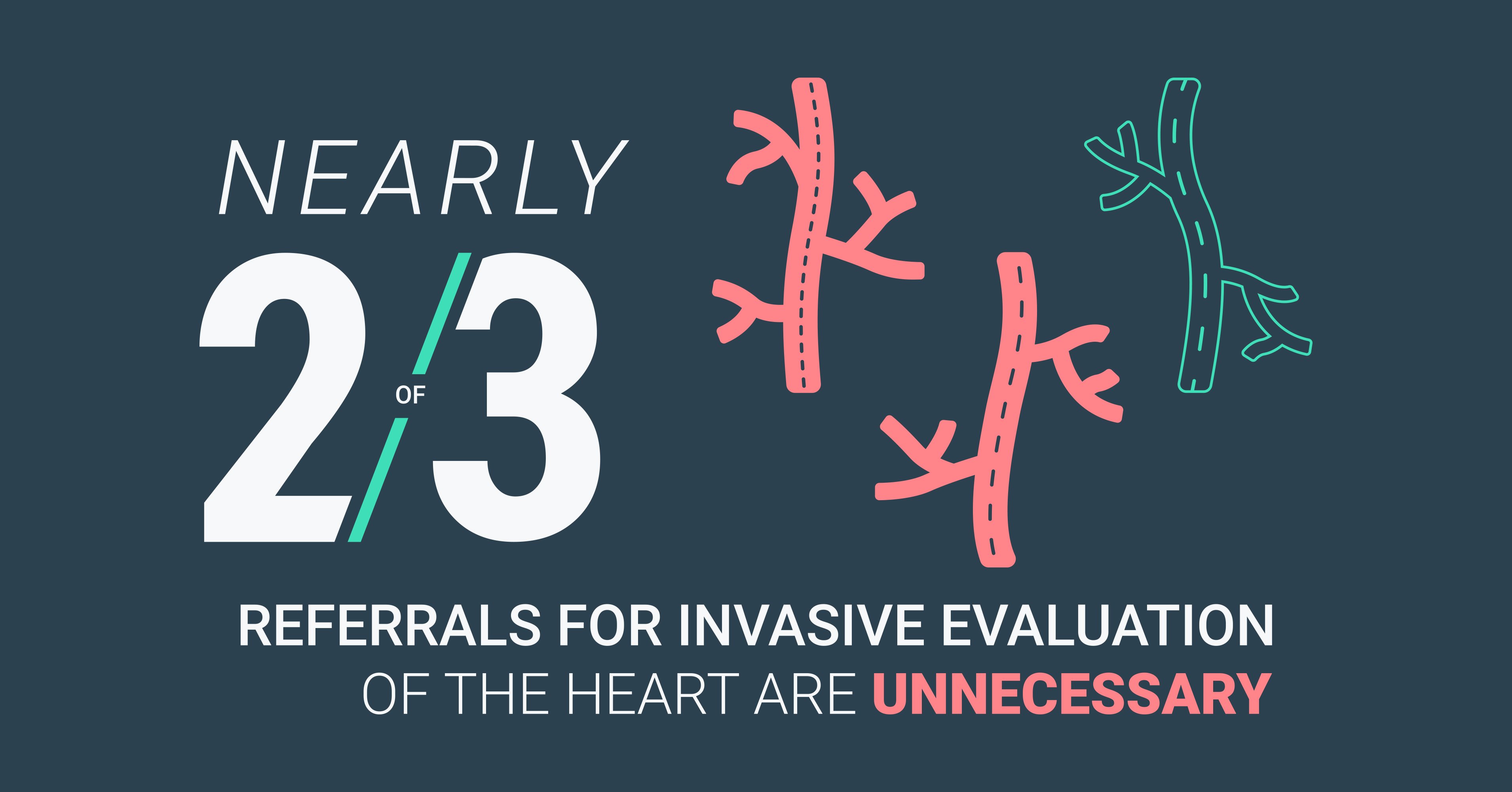The Recipe to a Healthy Heart:Your Guide to Preventing Heart Disease
Sure, the taste of food is important, but do you know how your diet impacts your heart? Many foods contain hidden ingredients that negatively impact...
4 min read
 James K. Min, MD, FACC, FESC, MSCCT, Founder & CEO of Cleerly
:
April 6, 2022
James K. Min, MD, FACC, FESC, MSCCT, Founder & CEO of Cleerly
:
April 6, 2022

Cleerly is excited to have released our vision statement calling for a new approach to cardiovascular care. It's an important topic - not just for Cleerly, but for the healthcare industry and all the patients impacted by heart disease - and we're going to be talking about it a lot over the next few months.
If 50% of patients who have a heart attack have never had prior symptoms, isn't it time to change how we identify patients at risk?
Cleerly believes it's time for a paradigm shift in cardiovascular care is because the current standard of care simply isn't working. For decades, we've been treating the symptoms of heart disease and not its underlying cause, which is the buildup of plaque in the arteries (atherosclerosis).
It's certainly important for doctors to address hypertension, high cholesterol, obesity, and Type 2 diabetes. But treating these symptoms in the context of heart disease doesn't eliminate the risk of heart attacks, plain and simple. Clinical evidence speaks for itself:
Our current standard of cardiovascular care misses far too many patients. Heart attacks are preventable if you look in the right place - but right now, we're looking in the wrong place.
That's why Cleerly is calling for a new standard of cardiovascular care. This new standard has three key components.
Not every blockage requires a stent. By analyzing the results of a coronary computed tomography angiography (CCTA screening), care teams can better determine a patient’s heart attack risk and develop a preventive care plan such as lifestyle changes or a prescription for FDA-approved statin therapy for reducing heart attack risk.
Screening for suspected cardiovascular disease (CAD) using CCTA will identify patients who are at risk of a heart attack based on its true cause, atherosclerosis, and not based on symptoms, surrogates, or sequelae.
Amid a new standard of care, it’s critical for both patients and non-cardiac physicians to understand and interpret what would otherwise be a complex image. CCTA screenings must be accompanied by clear insights into how much plaque has accumulated and whether it can be treated with medication to reduce its risk by conversion to more stable plaque.
This new standard of care represents a seismic shift in the way we approach heart health. Coronary imaging, offered by cardiology, is typically reserved for patients experiencing chest pain or shortness of breath. That’s a symptom-driven approach and not a disease-based approach. CCTA screening of suspected CAD, offered by imaging centers, has the benefit of being both far more widely available and far better suited to identifying at-risk plaque to inform treatment, preventing future heart attacks – allowing for an approach that can prevent heart attacks instead of just treating them.
CCTA allows for reducing fatal and non-fatal heart attack risk by more than 40%. In addition, CCTA can assess additional markers of heart attack risk that are not available in coronary artery calcium scoring, such as non-calcified plaque and overall plaque burden. These markers are also not available in the most commonly used cardiac imaging tests, nuclear stress perfusion and other stress tests.
In fact, the latest clinical guidelines have elevated CCTA to a Level 1A recommendation for evaluating chest pain in patients with no known coronary artery disease. As one author of the new guidelines said in a statement: “CCTA has an important advantage by being able to directly visualize early stage plaque that may be missed by traditional approaches. This fosters an approach of early prevention and lifestyle changes to reduce risk of major cardiac events.” Plus major insurers, including United Healthcare, will now reimburse for CCTA as a first-line test for those with stable chest pain but are otherwise low risk.
An approach to heart health focused on precision health and preventive care, with screening for suspected CAD, will make it possible to approach heart attack risk the same way we approach cancer risk. Mammograms have replaced self exams as the standard of care for preventing breast cancer. We schedule colonoscopies to screen for colorectal cancer risk instead of asking patients to look for blood in their stool. We use low-dose lung CTs, not X-rays, to scan for lung cancer.
Each of these paradigm shifts has led to increased detection of early-stage cancer, lower treatment costs, better quality of life – and most importantly, fewer deaths. Since 1990, the breast cancer death rates have dropped 41%, colon cancer deaths are down 48%, and lung cancer deaths have fallen 43%.
We can do the same for cardiovascular care. We just need a different approach – and that approach starts with treating the disease and not the symptoms.
References:
Heart Disease and Stroke Statistics—2019 Update. American Heart Association. Jan. 31, 2019.
Preventing Myocardial Infarction in the Young Adult in the First Place. Journal of the American College of Cardiology. May 2003.
Coronary Risk Factors and Plaque Morphology in Men with Coronary Disease Who Died Suddenly. The New England Journal of Medicine. May 1, 1997.
Cardiac Computed Tomography for Comprehensive Coronary Assessment: Beyond Diagnosis of Anatomic Stenosis. Methodist Debakey Cardiovascular Journal. Released April 2020.
SCOT-Heart: Does it live up to the PROMISE? Journal of Cardiovascular Computed Tomography. January 4, 2019
Risk screening in cardiovascular disease: the role of CT coronary angiography in asymptomatic patients, why wait? British Cardiovascular Society
Cancer Stat Facts: Female Breast Cancer, National Cancer Institute, Last updated 2021
Cancer Stat Facts: Colorectal Cancer, National Cancer Institute, Last updated 2021
Cancer Stat Facts: Lung and Bronchus Cancer, National Cancer Institute, Last updated 2021
Are you ready for the future of cardiology care?
Download our report to learn about our approach to heart health.

Sure, the taste of food is important, but do you know how your diet impacts your heart? Many foods contain hidden ingredients that negatively impact...

As we reach the end of 2023 and yet another remarkable year at Cleerly, it’s a great opportunity to reflect on all we’ve accomplished and begin...

Cleerly has had a busy few months – attending conferences, panel sessions, and winning awards as we all work together to achieve our mission of a...

Historically, our diagnostic approaches to patients with suspected heart disease have been restricted to the evaluation of patients with symptoms...

Quantification of coronary artery disease (CAD) burden and atherosclerotic plaque type has been shown to be the strongest determinant of future risk...

Cleerly is excited to have released our vision statement calling for a new approach to cardiovascular care. It's an important topic - not just for...